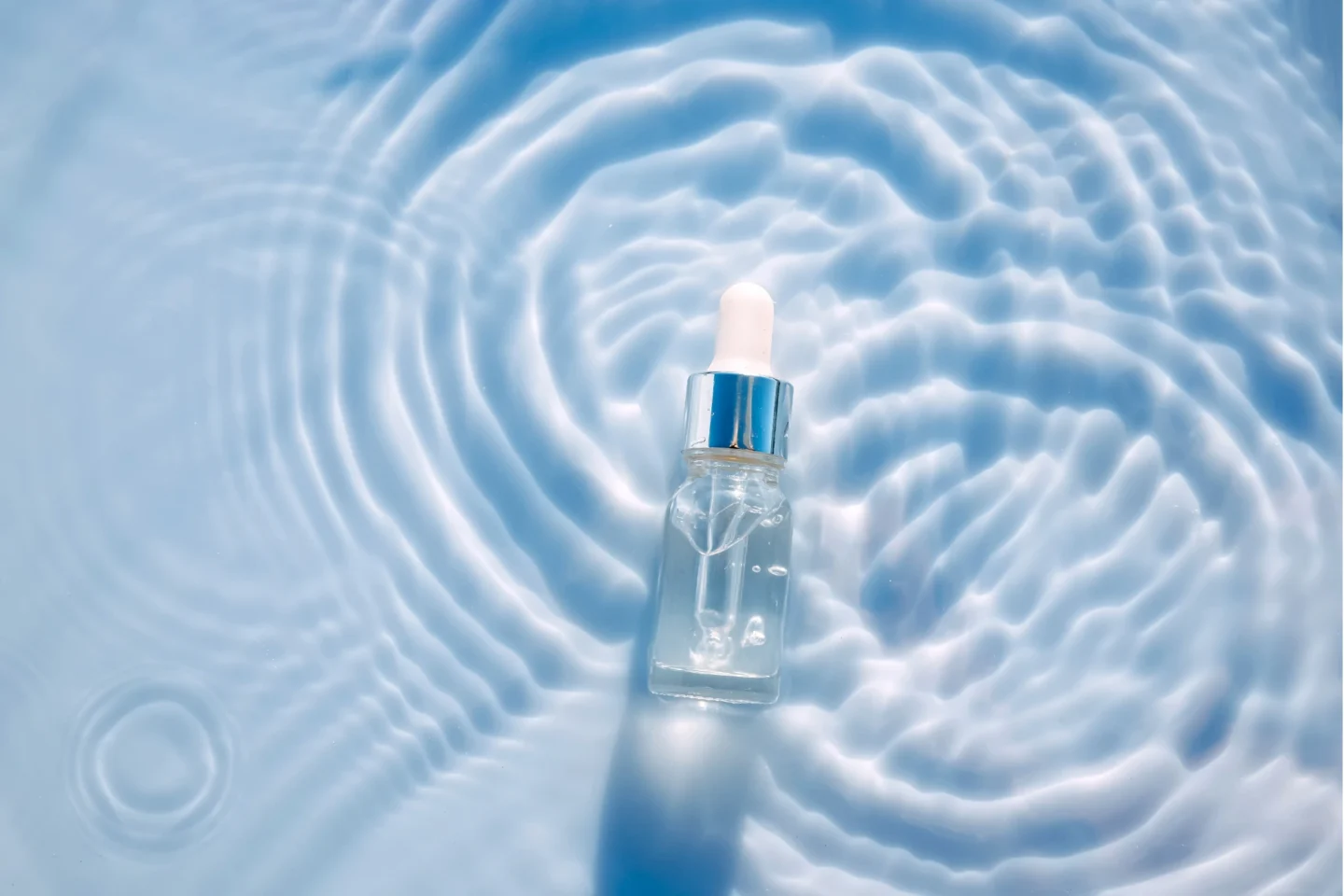
Alpha hydroxy acids (AHAs) are a popular group of naturally occurring acids found in fruits, sugar cane, and milk. They are known for their impressive skincare benefits, such as their ability to gently exfoliate the skin, helping to improve texture, reduce dark spots, and diminish the appearance of fine lines and wrinkles.
So, whether you’re a seasoned skincare enthusiast or just beginning your journey with chemical exfoliants, in this guide, I’ll break down everything you need to know about AHAs, including their benefits, how to incorporate them into your skincare routine, and what to watch out for.
So, let’s get started on this journey to radiant skin together!
What Are Alpha Hydroxy Acids?
Alpha Hydroxy Acids (AHAs) are a group of naturally occurring organic acids derived from fruits, sugar cane, and milk. They are classified based on their molecular size and water solubility, which can influence their effectiveness and potential irritation. The most common types of AHAs include:
- Glycolic acid: Derived from sugarcane, it’s the smallest AHA molecule and is often used for exfoliation and anti-aging.
- Lactic acid: Derived from milk, it’s slightly larger than glycolic acid and is known for its hydrating properties.
- Citric acid: Found in citrus fruits, it’s a milder AHA with brightening and antioxidant benefits.
- Malic acid: Derived from apples and other fruits, it’s a milder AHA with exfoliating and moisturizing properties.
- Tartaric acid: Found in grapes, it’s a milder AHA with antioxidant and brightening benefits.

How Do Alpha Hydroxy Acids (AHAs) Work?
Alpha Hydroxy Acids work by gently removing dead skin cells by breaking down the bonds that hold them together. Unlike harsh scrubs or physical exfoliants, AHAs penetrate the surface layer of the skin and dissolve the glue-like substance that keeps old, dull skin cells in place.
Additionally, it encourages natural cell turnover, helping your skin reveal a fresher, smoother, and more radiant complexion.
But that’s not all — AHAs also improve your skin’s hydration. These acids are humectants, which means they attract water and help lock in moisture, keeping your skin hydrated and plump.
Key Benefits of Alpha Hydroxy Acids (AHAs)
Alpha Hydroxy Acids (AHAs) offer a variety of benefits for improving skin health and appearance. Here’s a more detailed breakdown of their key advantages:
Gentle Exfoliation
Unlike physical exfoliants that can be too abrasive for the skin, AHAs gently remove dead skin cells, making it a great option if you have sensitive or dry skin.
Anti-Aging
AHAs can stimulate collagen production, a protein that gives the skin structure and elasticity, which can help reduce the appearance of wrinkles and fine lines, improve skin firmness, and give the skin a more youthful appearance.
Improved Skin Texture
By encouraging natural cell turnover, AHAs help reveal fresher, smoother skin. Regular use can reduce the appearance of rough patches, uneven texture, and even skin conditions like keratosis pilaris.
Hyperpigmentation
If you struggle with hyperpigmentation, melasma, or sun spots, AHAs can help lighten these dark areas. Regular use of products containing AHAs can result in a more even skin tone and a brighter complexion.
Hydration
Some AHAs, such as lactic acid, have hydrating properties that can help to improve skin moisture levels and reduce dryness, making it especially beneficial for those with dry skin.
Acne
AHAs can help to prevent clogged pores and reduce inflammation, which can help to soothe acne-prone skin. By removing dead skin cells and excess oil, AHAs can also help to reduce the risk of acne breakouts.
Common Uses of AHAs in Skin Care
Alpha Hydroxy Acids (AHAs) are used in various skincare products, each providing different levels of exfoliation. Here are the most common ways to utilize them:
- Cleansers
- Toners
- Serums
- Moisturizers
- Chemical peels (usually performed by professionals)
The concentration of AHAs in skincare products usually ranges from 5% to 10% for over-the-counter products, while professional treatments can go as high as 30% to 70%.
Possible Side Effects and Considerations
While alpha hydroxy acids (AHAs) offer fantastic benefits for your skin, it’s essential to be aware of potential side effects. Here are some common considerations to keep in mind:
Sun Sensitivity
AHAs can increase your skin’s sensitivity to sunlight, making it more prone to sunburn. It’s crucial to wear sunscreen daily when using AHA products to protect your skin from harmful UV rays.
Skin Irritation
Some users may experience mild irritation, redness, or stinging, especially if they have sensitive skin or are new to chemical exfoliants. It’s a good idea to start with a lower concentration and gradually increase it as your skin adjusts.
Dryness
Overusing AHAs can lead to dryness or flakiness as they exfoliate the skin. To prevent this, be mindful of how often you use AHA products and consider incorporating a hydrating moisturizer into your routine.
How to Incorporate AHAs into Your Skin Care Routine
Adding alpha hydroxy acids (AHAs) to your skincare routine can be a game changer for achieving smoother, brighter skin. Here’s how to do it effectively:
Start Slow
If you’re new to AHAs, begin with a product that has a lower concentration (around 5% to 10%). This allows your skin to acclimate without overwhelming it.
Patch Test
Before using the product, it’s wise to perform a patch test. Apply a small amount to a discreet area of the skin to check for any adverse reactions.
Apply in the Evening
For best results, incorporate AHAs into your evening routine. This helps reduce sun sensitivity and allows the ingredients to work overnight.
Frequency
Initially, use AHA products once or twice a week. As your skin becomes accustomed, you can gradually increase the frequency to every other day or even daily, depending on your skin’s tolerance.
Layer Wisely
If you use other active ingredients in your routine, like retinoids or BHAs, be cautious about layering. It’s often best to avoid mixing AHAs with these ingredients to minimize irritation.
Follow with Moisturizer
After applying your AHA product, always follow up with a hydrating moisturizer. Look for hyaluronic acid or glycerin to keep your skin hydrated and balanced.
Use Sunscreen
Since AHAs can make skin more sensitive to the sun, it is crucial to apply a broad-spectrum sunscreen with at least SPF 30 when using AHA products during the day.
As you can see, Alpha Hydroxy Acids (AHAs) are a fantastic addition to your skincare routine if you’re looking for gentle, effective exfoliation. From smoothing rough patches to reducing fine lines and brightening dark spots, AHAs can do wonders for your skin.
Just remember to start slow, listen to your skin, and never skip the sunscreen!
Have you tried using AHAs in your routine? Let us know your favorite AHA products in the comments below!
xx,

FAQs Section
Q. What are examples of AHA acids?
A: Common examples of AHAs include glycolic acid, lactic acid, citric acid, mandelic acid, and tartaric acid. Each has unique properties and benefits for the skin.
Q. What does AHA do to the skin?
A: AHAs exfoliate the skin by breaking down the bonds between dead skin cells, promoting cell turnover, improving skin texture, reducing the appearance of fine lines, and enhancing overall radiance.
Q. Can I use AHA every day?
A: While many people can use AHAs daily, it’s advisable to start with a few times a week and gradually increase frequency based on your skin’s tolerance.
Q. What is the strongest AHA?
A: Glycolic acid is considered the strongest AHA due to its small molecular size, which allows it to penetrate the skin more deeply and effectively.
Q. Is hyaluronic acid considered an AHA?
A: No, hyaluronic acid is not an AHA. It is a hydrating ingredient that helps retain moisture in the skin, while AHAs are primarily exfoliants.
Q. Is vitamin C an AHA?
A: No, vitamin C is not classified as an AHA. It is an antioxidant that can brighten the skin and help with hyperpigmentation, but it has different properties and functions than AHAs.
Q. What happens if you use AHA too often?
A: Overusing AHAs can lead to skin irritation, increased sensitivity, redness, and dryness. It’s essential to find the right balance for your skin.
Q. Is AHA or retinol better?
A: Both AHA and retinol serve different purposes. AHAs are great for exfoliation and improving skin texture, while retinol is known for its anti-aging properties and for promoting collagen production. The best choice depends on your specific skin concerns.
Q. Does AHA cause skin thinning?
A: AHAs do not typically cause skin thinning, but overuse can increase sensitivity and irritation. Using them as directed and monitoring your skin’s response is essential.
Q. Should I use AHA at night or morning?
A: Using AHAs at night is generally recommended to minimize sun sensitivity. If used in the morning, ensure that a broad-spectrum sunscreen is applied afterward.
Q. Can you use AHA under the eyes?
A: It’s best to avoid using AHAs directly under the eyes, as the skin in that area is thinner and more sensitive. Instead, opt for products specifically formulated for the delicate under-eye area.
Q. What pairs well with AHA?
A: AHAs pair well with hydrating ingredients like hyaluronic acid and antioxidants like vitamin C. However, avoid combining them with strong retinoids or other exfoliants to prevent irritation.
Q. Does AHA increase collagen?
A: Yes, AHAs can stimulate collagen production, which helps improve skin elasticity and reduce the appearance of fine lines and wrinkles.
Q. Is AHA good for mature skin?
A: Absolutely! AHAs can help improve skin texture, reduce fine lines, and enhance radiance, making them an excellent option for mature skin.
Q. Is 10% AHA too much?
A: A 10% concentration of AHA is generally considered high and may be suitable for more experienced users. If you’re new to AHAs, starting with a lower concentration (around 5%) is advisable.
Q. Which acid gives glass skin?
A: Hyaluronic acid is often associated with achieving “glass skin” due to its intense hydrating properties. But, using AHAs to exfoliate and brighten the skin can also contribute to that dewy, smooth appearance.
Q. Can I mix AHAs with other skincare ingredients?
A: Avoid mixing AHAs with potent retinoids or other exfoliants to prevent irritation. However, you can effectively combine them with hydrating ingredients like hyaluronic acid and antioxidants like vitamin C.
Q. Are AHAs suitable for all skin types?
A: AHAs can benefit most skin types, but those with sensitive skin should proceed cautiously and start with lower concentrations. Always patch-test new products before complete application.
